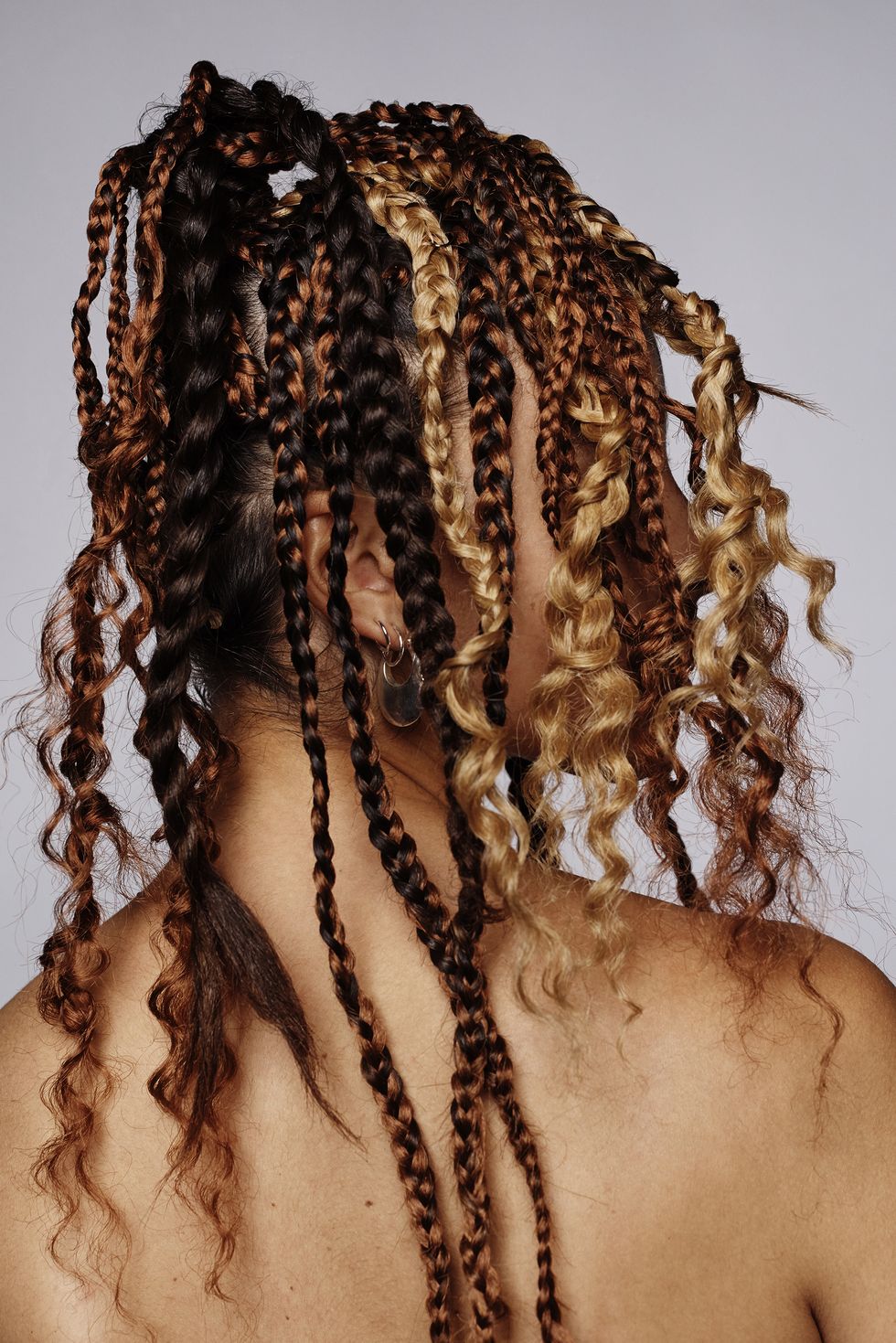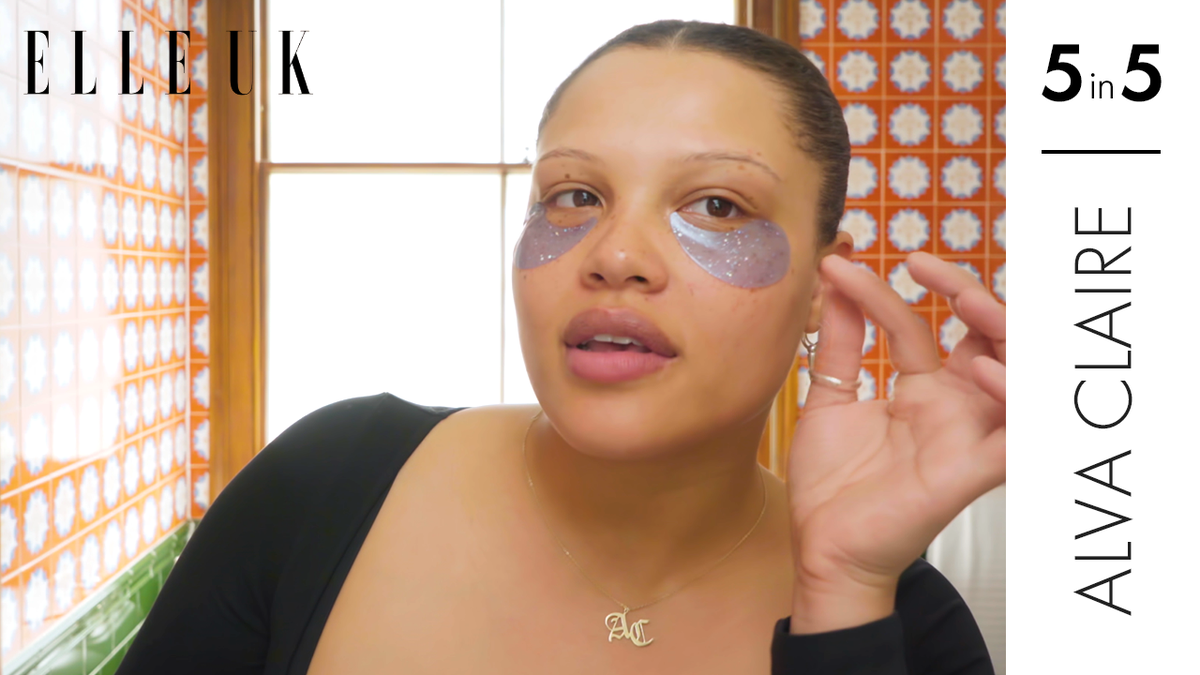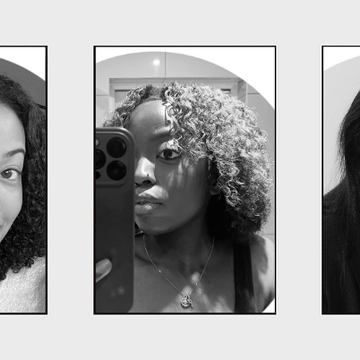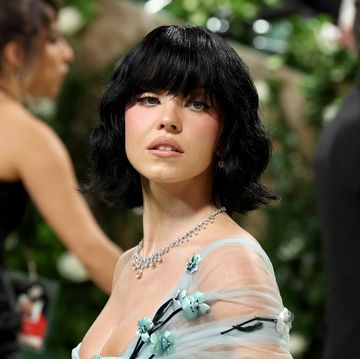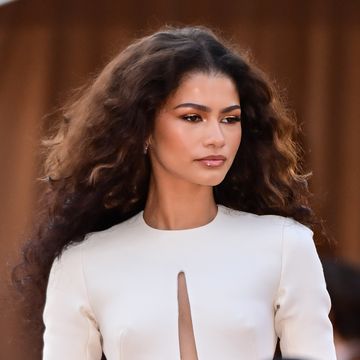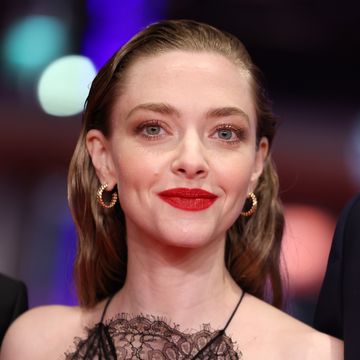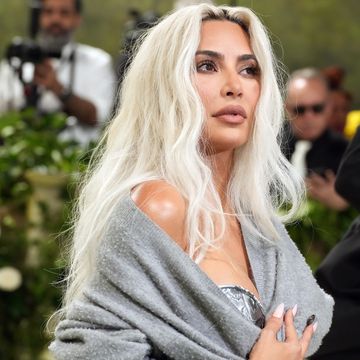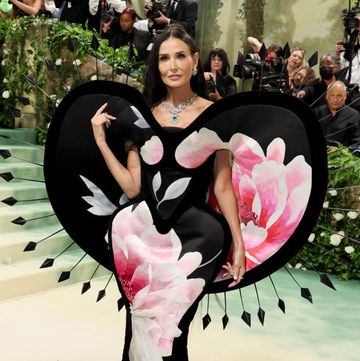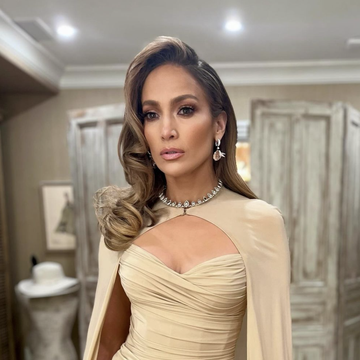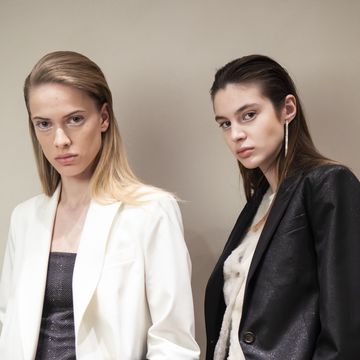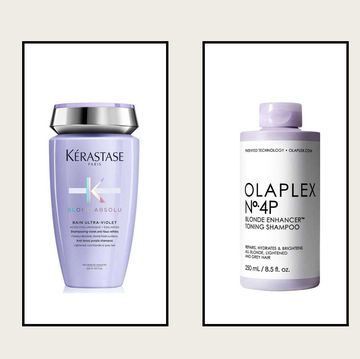When I was a little girl, I had a routine. Every evening, I’d take a cushion and place it in front of my mum’s chair. There I’d sit as she sprayed my hair twice: first with water, then leave-in conditioner, its sweet scent filling the air as she ran a yellow, wide-toothed comb through my waist-length curls. I’d rest my head on her knees as she parted my hair into sections – sometimes two, sometimes four, sometimes 20 – and braided them tightly, me handing her bobbles, one by one.
Wearing those braids felt like the most natural thing in the world. Sometimes I’d just keep them in overnight, others I’d eke them out for as long as possible, swishing them over my shoulders as I walked. Growing up in the north of England, I was one of the only mixed-race people I knew, and I loved that my hair made me different: how it bounced down from the scrunchie tied high on my head; the single golden ringlet that fell right between my brows. But, the further I've grown from childhood, the more complicated navigating my hair, modern beauty ideals and, especially, other people’s opinions has become.
Last summer, over coffee with a friend, I floated the idea of how much easier my morning routine would be if only I wore my hair in cornrows again, rather than having to style it every day. A simple point to make, or so I thought. But she looked surprised, and responded: ‘Ummm… Are you Black enough to have braids?’
I froze, just for a second. Then quickly brushed off her words, changing the subject. But the question stayed with me for days. Why? I've always had a complicated relationship with my hair, and this comment halted years of progress.
My hair is pretty much a 3b curl pattern: an unpredictable mane of spirals tumbling across my shoulders. It’s one of the main signifiers of my mixed background - my mum is white, and my dad was Black. Two cultures fused together in one person. The result: physical ambiguity. My skin is the colour of caramel, I have almond-shaped eyes, freckles sprinkled across my nose, and full lips. Often, people can’t place my Jamaican heritage, giving me a chameleonic ability to mould my appearance to match my surroundings, shifting my identity through how I wear my hair. When it’s curly, people go out of their way to ask me where I’m ‘from’ (‘Like really. Like inside.’ Cue a heavy sigh.) But when I straighten it, I blend in.
Discovering that as a teenager changed everything. I revelled in transforming myself to match my peers: every serum I could find had a home on my dressing table; part of a new ritual of flattening my hair. The more I tried to copy friends’ poker-straight ponytails, the fewer comments I got about my ‘frizz’ – at school, boys balanced pens in my ringlets and chanted ‘Tina Turner’ as I walked down the corridor. I’d now see the latter as a compliment; back then, it was a reminder that my hair made me different.
I can’t pinpoint the exact moment I started wearing my hair curly again. It was gradual. I grew up, and so did the world around me. Together, we became open to new interpretations of textured hair. During my first week of working in magazines, I read an article about ‘the perfect blow dry’, featuring an image of model Imaan Hammam with her hair blown out into a halo of curls. It was the first time I’d seen curls as a desirable finish – as a regular visitor of blow-dry bars, I was used to selecting from a menu of smoothed-out looks. Hers was more like my natural hair. That felt… new.
Instagram played a part, too. Over the past few years, images of natural hair have made their way onto feeds. Rihanna posted pictures wearing curls almost identical to mine for one of her annual Crop Over festival trips. Then Solange kept her hair set in clips on the for the album cover of 'A Seat At The Table' , and almost every scene of Beyoncé’s 'Black Is King' was a celebration of intricate braids. The more I saw and loved and coveted these looks, the more I realised they were designed precisely for textured hair. It made having curls seem like a good thing.
Then, on the red carpet – a space renowned for sleek, formal styles – celebrities began to embrace their hair texture. I watched as Zendaya, Yara Shahidi, Laura Harrier and so many more wore braids with pride: long cornrows snaking their way down backless gowns; thin braids piled high into a crown upon their heads; locs swept over shoulders to reveal exquisite diamond earrings. The very hairstyles I’d not worn in almost 20 years were being showcased, not as a way to ‘control’ textured hair, but celebrate it. I’d had it all wrong. It was time to change my lexicon:
Turns out, I wasn’t alone. Celebrated hair stylist Charlotte Mensah, who has won Afro Hairdresser of the Year three times at the British Hairdressing Awards, has also seen a change at her London salon, Hair Lounge: ‘We’ve been conditioned to think blow-drying it straight is the only way to dress your hair. But social media has opened people’s minds – I’ve noticed fewer asking for a straight finish, and more are requesting elaborate braiding than ever. They’re willing to go that extra mile.’ And so, I thought, was I.
Until the moment someone questioned whether I was ‘Black enough’ to wear braids, and I second-guessed myself. I recalled the headlines calling out celebrities for appropriating hairstyles, and I let one person's judgement of my light skin make me fear I’d be adding to that list. Then it hit me: I was worrying I was ‘too white’ to wear a hairstyle associated with the Black community. Such as my father. Such as half my ancestry. Such as me.
To be told that you’re ‘not really Black enough’ to do anything makes out that heritage is a concept that can be measured by how you look. My whole life, I’ve had people offering their opinion on my ‘level’ of ethnicity. I’ve been told my hair is ‘too European’ for Afro products, but ‘too Afro’ for mainstream serums. My skin is ‘too Black’ to wear fake tan, but I ‘look pale and need some sun’. That I’m ‘dampening my spirit’ when I straighten my hair, but am ‘making a real statement’ when it's curly. That comment about my braids was just another uninvited judgement.
Black hair can, to some, be intimidating. It holds power; a cultural significance. Braids, which date back to 3500BC, are a tangible link to our ancestors, who wore them to signify age, wealth or social status. During slavery, braids were a necessarily practical, long-lasting hairstyle, with names such as cane and cornrows directly referencing agriculture and labour. Braids were even used to hide seeds in people’s hair before they boarded slave ships, so they’d have something to harvest at their destination – they were a means of survival.
Then there’s the link between braids and family, which has transcended time. ‘In African tribes, the elder members would style the younger ones’ hair, while the rest of the family watched,' Mensah explains. 'It was an empowering, bonding experience – it formed a community.' Hearing this made me think of my own childhood, when I’d spend hours trying to copy my braids on friends at sleepovers. I thought of my grandpa smiling as he’d help me tie my hair up before school, telling me it was my ‘crowning glory’. I remembered long days spent watching hairdressers transform my aunties’ short Afros into long box braids and golden Nubian twists. We’d go to hair shops in south London together beforehand – I can still recall the rubbery texture of the conditioning masks they’d buy for me, and how they’d turn my dry ends buttery soft. The act of caring for our hair has always brought me closer to the people I love.
From just those few lines on thousands of years of tradition, it’s clear that behind Black hairstyles lies history. Issues of cultural appropriation arise not necessarily from who wears braids, but why and how they wear them. As author and academic Emma Dabiri explains in her book 'Don't Touch My Hair', it stems from an imbalance of power, in which an ‘[advantaged] group systematically extracts the cultural resources of a subordinate group, erasing the subordinate group’s involvement in the process’.
The charge of appropriation lies in the fact that advantaged groups can take on Black hairstyles without having to consider the history behind them, and without any concern that they’ll experience the associated prejudice – remember, Black women are 1.5 times more likely to be sent home from work because of their hair*, while children are regularly sent home and even excluded from school for wearing protective styles such as locs and braids, or because their natural hair was ‘too big’ to comply with guidelines.**
Which is why we must always, ‘give credit where it’s due. Do your research and acknowledge the past behind those styles. And then honour the people who created them,’ says Mensah. It’s about respect: braids should be treated with the same recognition as any other cultural tradition.
As an adult, I’ve never had to wear braids. My hair isn’t coarse in texture, so I don’t need to use them as a protective hairstyle to prevent breakage and encourage growth. But I was drawn to their promise of transformation; that connection to history. The thing was, I’d taken myself so far from my natural hair, I wasn’t sure how to make my way back. So I educated myself, through books, the internet and conversations with friends, family and professional stylists. The more I learnt, the more I understood braids were a way to embrace my heritage in a way I never had before.
Being mixed race is kind of like living in limbo: half in one culture, half in another; not quite making it into either. It can often invite pressure to conform to just one ‘side’ of you and, so many times, I’ve given into that pressure. Really, these past few years haven’t been a battle with my hair. They’ve been a battle with myself: an identity conflict of cultures, opinions and trends, all coming to a head in – or, should I say on – my head. How I wear my hair is my choice, and who I am goes beyond how I look. I know that now.
Recently, I went back to my family home, where my mum still has her chair in the living room. That evening, it felt like the most natural thing in the world to take a cushion and sit in front of her. She brought out that same yellow comb, parted my hair into sections and braided tight cornrows along my scalp. As I got up to look in the mirror, I expected to be surprised; to see something new. Instead, I saw that same freckled face looking back at me, a little older now, sure, but framed with those same braids I once wore everyday. That’s when I realised: learning to embrace my hair hadn’t been about taking me somewhere new – I’d just been finding my way back to myself again.
*Dove 2019 CROWN research study. **Ruby Williams, BBC News, February 2020
Like this article? Sign up to our newsletter to get more articles like this delivered straight to your inbox.
In need of more inspiration, thoughtful journalism and at-home beauty tips? Subscribe to ELLE's print magazine today! SUBSCRIBE HERE
